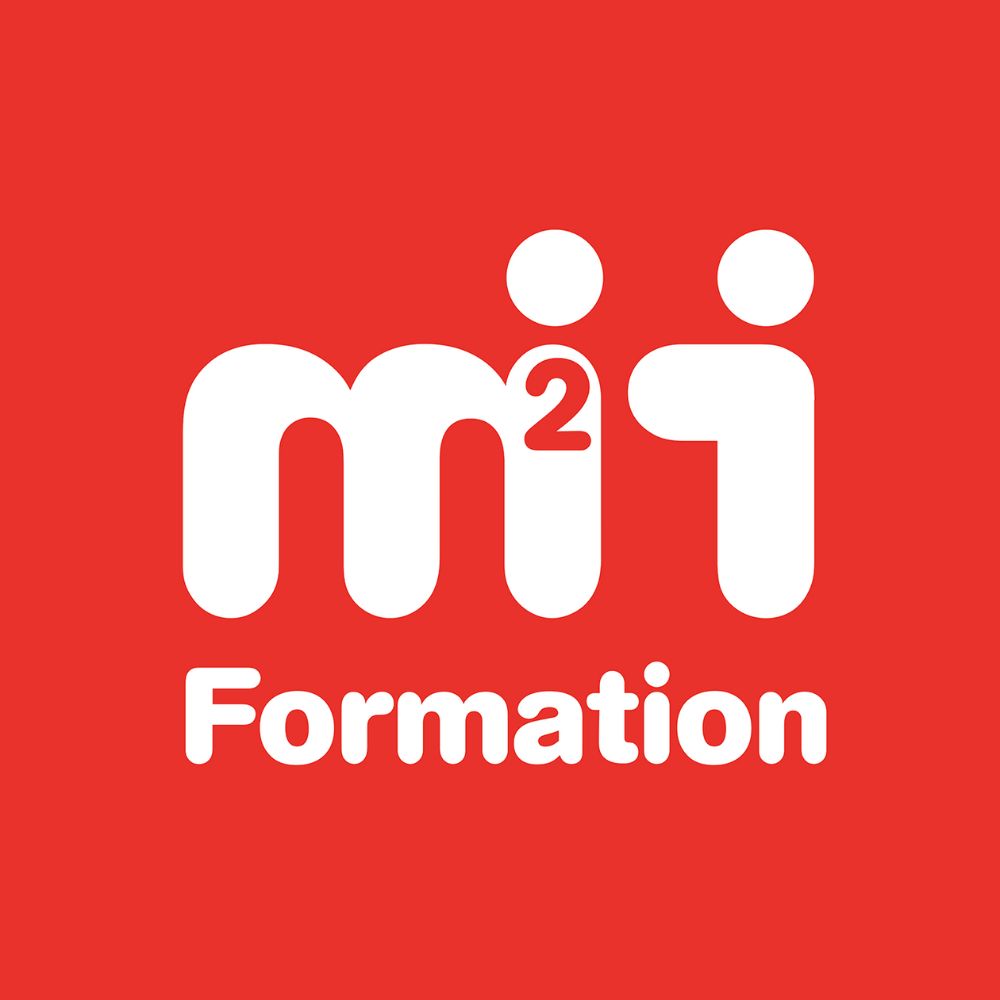Formation IBM Case Foundation 5.2.1 - Administration
Public admis
- Salarié en Poste
- Demandeur d'emploi
- Entreprise
- Etudiant
Financements
Eligible CPF Votre OPCO Financement personnelObjectifs de la formation
La formation IBM Case Foundation 5.2.1 Administration couvre tous les aspects du système workflow d'IBM Case Foundation : configuration, sécurisation, maintenance, gestion et intégration d'applications.
À l'issue de cette formation, vous serez en mesure de :
- Configure the workflow system
- Identify the components of a workflow system
- Create and configure a workflow system to support FileNet workflow applications
- Create and configure an isolated region
- Create a connection point and isolated region
- Create isolated region objects
- Expose data fields
- Define indexes for queues and rosters
- Create and configure in-baskets and roles
- Configure Content Navigator for workflow
- Configure a web application and step processor
- Security
- Inspect workflow system security settings
- Add users and groups to a workflow system
- Identify and resolve security issues
- Maintain the Workflow Show
- Use administrative tools for maintenance
- Monitor with the Process Services Ping page
- Monitor with System Dashboard
- Monitor with vwtool
- Maintain event logs
- Manage Work in Progress
- Use Case Foundation tools to search for work with basic and advanced search criteria
- Modify work items
- Process and manage work
- Manage a workflow exception
- Component Integration
- Understand the purpose of component integration in workflow applications
- Understand the architecture of the Component Manager Frameworks
- Understand what component queues provide
- Create and configure a Java component
- Monitor and maintain component queues
| Tarif |
A partir de 2 890,00 € |
| Durée | 4 jours (28h) |
| Modes |
|
| Sessions | |
| Lieux | Partout en France |
| Tarif |
A partir de 2 890,00 € |
| Durée | 4 jours (28h) |
| Modes |
|
| Sessions | |
| Lieux | Partout en France |
Programme
Configure the workflow system
Workflow system concepts
What is a workflow system?
What is the purpose of a workflow system?
Workflow system components
Connection points
Isolated regions
Understand a workflow system and its function
Identify the components of a workflow system
Create and configure a workflow system to support FileNet workflow applications
General properties of a workflow system
Runtime Options
Language Packs
Web Applications
DbExecute Connections
Remote Servers
Isolated Regions
Fine-tuning the workflow system
Create and configure an isolated region
Create a connection point and isolated region
Create isolated region objects
Create and configure Queues
Create and configure Rosters
Create and configure Event logs
Create and configure Application Spaces
Expose data fields
Expose data fields to queues and event logs
Define indexes for queues and rosters
Create an index
Configure queues and event logs to use the index
Create and configure in-baskets and roles
Create and configure an in-basket
Create roles
Add in-baskets and members to roles
Configure Content Navigator for workflow
Create a desktop
Create a repository for the connection point
Configure the desktop for workflow
Configure the desktop to open Process Designer and Process Tracker
Configure a web application and step processor
Configure a web application
Deploy a step processor
Configure a step processor
Security
Security overview
Layers of security
Object store security
Isolated region security
Workflow system security groups
In-baskets
Application spaces
Roles
Avoid security conflicts
Security configuration
About isolated region security
Control access to queues
Control access to rosters
Control access to rosters: recommended practice
Roster and queue security settings
How to configure queue and roster security
Maintain the Workflow System
Use administrative tools for maintenance
Maintaining a workflow system
Administrative tools for the Workflow system
Administration Console for Content Platform Engine
Lock an isolated region
Workflow system component administration
Process Administrator
Start Process Administrator
Process Services Ping page
System Dashboardvwtool
Logging systems
Monitor with the Process Services Ping page
Process Services Ping Page
Process Services Ping Page: Overview
Process Services Ping Page: URL
Ping Page: Log file location
Ping page: Helpful links
Sample: API Stats
Monitor with System Dashboard
What is System Dashboard?
Why use System Dashboard?
Dashboard Terms (1)
Dashboard Terms (2)
System Dashboard Structure
Create clusters to view data
Use the Dashboard views
Execute options for Listener node and view data
Archiving Manager
Configuration Guidelines
Process counters to watch (examples)
Monitor with vwtool
Use vwtool to monitor an isolated region
Start vwtool
Obtain status information on workflow system
Run loadstatus
Report memory usage, database usage
Report version and system configuration
Maintain event logs
Event tools
Event architecture1
About event loggingView event logs
View events with New Workflow Search
View events with Process Administrator
Event log maintenance guidelines
Select event log options
PELog
Troubleshoot the workflow system
Troubleshooting overview
Support resources
Collecting data
For Process Clients issues: fnlog4j.properties
Fnlog4j concepts
Enable fnlog4j
Two trace methods both use log4j
vwtool trace log options
Manage Work in Progress
Search for work
Process Administrator
Search options
Viewing workflows and work items
View and customize search results
Ways to refine a search for work
Use exposed fields in searches
Use the Criteria tab to filter a search
Search user queues
View workflow history in Process Tracker
Modify work
Reasons to modify work
Tools for modifying work
Work item status
Locking work
About workflow properties
Modify data field values
Modify workflow groups
Open workflow or work item in Process Tracker
Modify an attachment reference
Considerations for modifying work
Process and manage work
Tools for processing and managing work
Ways to complete work items
Assign or reassign work to participants
Terminate work
Delete work
Designate a substitute participant
Unlock work
Add and remove trackers
Manage workflow exceptions
About workflow exceptions
Conductor queue
Get information about workflow exceptions
View the information stack
Modify workflows and work items
Component Integration
Component integration concepts
Purpose of component integration
Component integrator
Component Manager Frameworks
Deciding on a Component Manager Framework
Component behavior
Types of components
Java adapter
JMS adapter
Create and configure component queues
How to create and configure component queue
Procedure: Create and configure a component queue
Create a code module
New Component Queue wizard
Adapter properties
JAAS credentials
Configure the Java Message Service adapter
What is a queue operation?
Elements of an operation
Operation parameters
Import Java component queue operations
Define JMS component queue operations
Stopping and starting component queues
Diagnosing Component Manager issues
Appendix
Appendix A. Start and Stop System Components
Appendix B. Solutions to exercises
Appendix C. Checkpoint solutions
Appendix D. Checkpoint solutions
Appendix E. Solutions to exercises
Appendix F. Troubleshooting
Prérequis
Ces formations pourraient vous intéresser
Objectifs de la formation
À l'issue de cette formation IBM AIX / UNIX langages Korn Shell et Bash, vous saurez acquis les connaissances et compétences nécessaires pour :
- Utiliser les concepts Shell
- Développer des scripts d'automatisation de système AIX-Linux.
| Tarif |
A partir de 3 990,00 € |
| Durée |
5j / 35h |
| Modes |
|
Objectifs de la formation
A l'issue de cette formation, vous serez capable de :
- Présenter les avantages ou valeurs des fonctionnalités de l'édition PowerVM
- Définir le micropartitionnement et les processeurs partagés LPAR (Logical Partitions)
- Expliquer les avantages de Simultaneous Multi-Threading (SMT)
- Décrire et configurer Integrated Virtual Ethernet (IVE)
- Installer et configurer Virtual I/O Server (VIOS)
- Configurer des périphériques réseaux virtuels tels que des adaptateurs Ethernet virtuels et partagés
- Configurer des adaptateurs de stockage SCSI et Fibre Channel virtuels
- Configurer des périphériques virtuels SCSI cibles sur un adaptateur virtuel SCSI
- Définir des pools de stockage sauvegardés sur fichier et des périphériques optiques virtuels sauvegardés sur fichier
- Identifier des points de défaillance uniques dans les environnements virtualisés
- Configurer plusieurs serveurs VIO (VIOS) pour une haute disponibilité
- Configurer des options avancées de réseau virtuel
- Configurer la fonction de failover de l'adaptateur Ethernet partagé
- Configurer les options avancées du SCSI virtuel
- Configurer MPIO dans la partition client d'un serveur VIO (VIOS)
- Gérer les événements de service, configurer les appels (call home), ajouter, échanger des FRU (Field Replaceable Units) et discuter du failover FSP (Flexible Service Processor)
- Effectuer la maintenance de PowerVM (VIOS).
| Tarif |
Contacter l'organisme |
| Durée |
5j / 35h |
| Modes |
|
Objectifs de la formation
- Cette formation fait l'objet d'une évaluation formative.
| Tarif |
Contacter l'organisme |
| Durée |
4 jours (28 heures) |
| Modes |
|
Objectifs de la formation
- Cette formation fait l'objet d'une évaluation formative.
| Tarif |
Contacter l'organisme |
| Durée |
4 jours (28 heures) |
| Modes |
|
Objectifs de la formation
À l'issue de cette formation Check Point R81 CCSE, vous aurez acquis les connaissances et compétences nécessaires pour :
- Provide an overview of the upgrade service and options available
- Explain how to perform management upgrade and migration
- Articulate the process using CPUSE features
- Articulate the purpose and function of Management High Availability
- Explain Primary vs Secondary, Active vs Standby and Synchronization
- Explain disaster recovery steps in case the primary management server becomes unavailable
- Provide overview of Central Deployment in SmartConsole
- Articulate an understanding of Security Gateway cluster upgrade methods
- Explain about Multi Version Cluster (MVC) upgrades
- Discuss Gaia Commands and how they are used
- Explain the main processes on s and s
- Describe how to work with scripts and SmartTasks to configure ?automatic actions
- Explain the Management Data Plane Separation (MDPS)
- Explain kernel operations and traffic flow
- Articulate Dynamic and Updatable Objects in Security Gateways
- Explain the policy installation flow and files used
- Describe the use of policy installation history
- Explain concurrent and accelerated install policy
- Describe an overview of APIs and ways to use and authenticate
- Explain how to make changes in GAIA and management configuration
- Explain how to install policy using API
- Explain how the SecureXL acceleration technology enhances and optimizes Security Gateway performance
- Describe how the CoreXL acceleration technology enhances and improves Security Gateway performance
- Articulate how utilizing multiple traffic queues can make traffic handling more efficient
- Discuss Site-to-Site VPN basics, deployment and communities
- Describe how to analyze and interpret VPN tunnel traffic
- Explain Link Selection and ISP Redundancy options
- Explain tunnel management features
- Discuss Check Point Remote Access solutions and how they differ from each other
- Describe how client security can be provided by Remote Access
- Explain authentication methods including machine authentication
- Explain Multiple Entry Point (MEP)
- Discuss the Mobile Access Software Blade and how it secures communication and data exchange during remote connections
- Describe Mobile Access deployment options
- Discuss various features in Mobile Access like Portals, Link
- Translation, running Native Applications, Reverse Proxy and more
- Explain basic concepts of Clustering and ClusterXL
- Explain about Cluster Control Protocol (CCP) and synchronization
- Describe advanced ClusterXL functions and modes like Load Sharing, Active-Active, VMAC mode etc
- Discuss Cluster Correction Layer (CCL) to provide connection stickyness
- Advanced Logs and Monitoring
- Explain how to determine if the configuration is compliant with the best practices
- Explain how to set action items to meet the compliance
- Discuss how SmartEvent functions to identify critical security issues
- Describe the components of SmartEvent and their deployment options
- Discuss how SmartEvent can assist in reporting security threats
- Explain how to customize event definitions and set an Event Policy
| Tarif |
A partir de 3 000,00 € |
| Durée |
3j / 21h |
| Modes |
|
Objectifs de la formation
- Utiliser les principales fonctions et les principaux utilitaires de l'iSeries (AS/400).
- Décrire quels outils de développement d’application sont disponibles
- Identifier les plateformes où ces outils sont utilisés
- Décrire le but et l’utilité de chaque outil
- Créer un profil utilisateur, une librairie, une file d’attente de sortie et un type d’action
- Décrire les éléments clé de Work Management, la sécurité et les fichiers de dispositif
- Ecrire une programme basique de Control Language pour exécuter des programmes
- Définir des fichiers logiques et physiques sur IBM i
- Créer des fichiers logiques et physiques
- Utiliser les fonctionnalités de base de LEPX Editor pour entrer et maintenir les fichiers sources
- Utiliser les fonctionnalités de base de Screen Designer et de Report Designer pour modéliser, créer et maintenir les affichages et les rapports
- Utiliser Interactive SQL et IBM i Navigator pour créer un schéma, des tables, des vues et des indexes
| Tarif |
Contacter l'organisme |
| Durée |
3j / 21h |
| Modes |
|
Objectifs de la formation
- Cette formation fait l'objet d'une évaluation formative.
| Tarif |
Contacter l'organisme |
| Durée |
3 jours (21 heures) |
| Modes |
|
Objectifs de la formation
Cette formation complète les notions de base présentées dans le cours "PowerHA SystemMirror 7 : Planification, mise en œuvre et administration". En approfondissant vos connaissances sur le sujet grâce à cette formation, vous aurez acquis les capacités nécessaires pour: > Connaître les concepts fondamentaux de PowerHA for AIX > Utiliser des options de configuration plus complexes :
- créer un cluster à quatre nœuds avec deux groupes de ressources indépendants,
- créer et tester des scripts de démarrage et d’arrêt d’applications,
- ajouter des groupes de ressources à un cluster existant avec des dépendances,
- configurer les notifications d’événements,
- créer et tester les suivis d’applications,
- mettre en œuvre l'intégration DLPAR avec un groupe de ressources en utilisant la fonction intégrée,
- configurer un groupe de ressources afin de fonctionner au sein d'une WPAR,
- Déterminer l’état du cluster et de ses composants en utilisant les commandes PowerHA/SNMP et le plug-in de IBM System Director,
-Intégrer des applications en utilisant Smart Assists dans PowerHA SystemMirror,
- Utiliser DB2 Smart Assist
| Tarif |
Contacter l'organisme |
| Durée |
5j / 35h |
| Modes |
|
Objectifs de la formation
Concrètement, cette formation Certification ISTQB foundation vous apportera les connaissances et compétences nécessaires pour :
- Identifier les compétences essentielles requises pour le test
- Comprendre les concepts fondamentaux du test logiciel
- Accroître l'efficacité et l'efficience des tests en utilisant des outils
- Découvrir l’ensemble des activités liées au test
- Identifier les facteurs qui influencent les priorités et les efforts liés aux tests
- Connaître les risques et les bénéfices liés à l'automatisation des tests
- Comprendre en quoi la gestion des risques est essentielle à l’activité de test
- S’organiser & Travailler au sein d'une équipe agile
Cette formation ainsi que l'examen associé ISTQB Foundation se basent sur la version 2024. L'obtention de la certification internationale ISTQB® permet de démontrer l'acquisition d'un niveau de connaissance et de compétences en test de logiciels.
| Tarif |
A partir de 1 890,00 € |
| Durée |
3j / 21h |
| Modes |
|
Objectifs de la formation
A l'issue de cette formation, vous serez capable de :
- Exploiter les bases de l'administration Cognos Analytics 12.x.
| Tarif |
A partir de 1 520,00 € |
| Durée |
2j / 14h |
| Modes |
|


